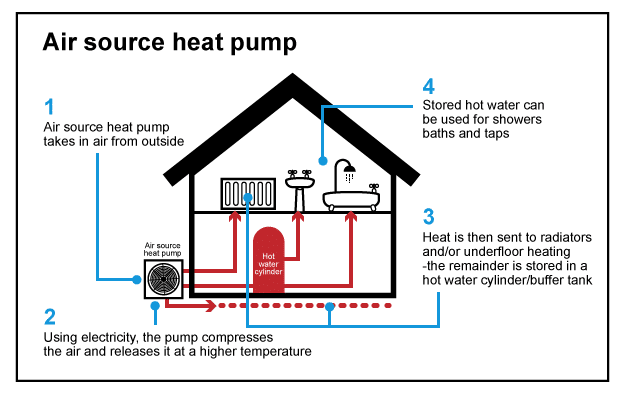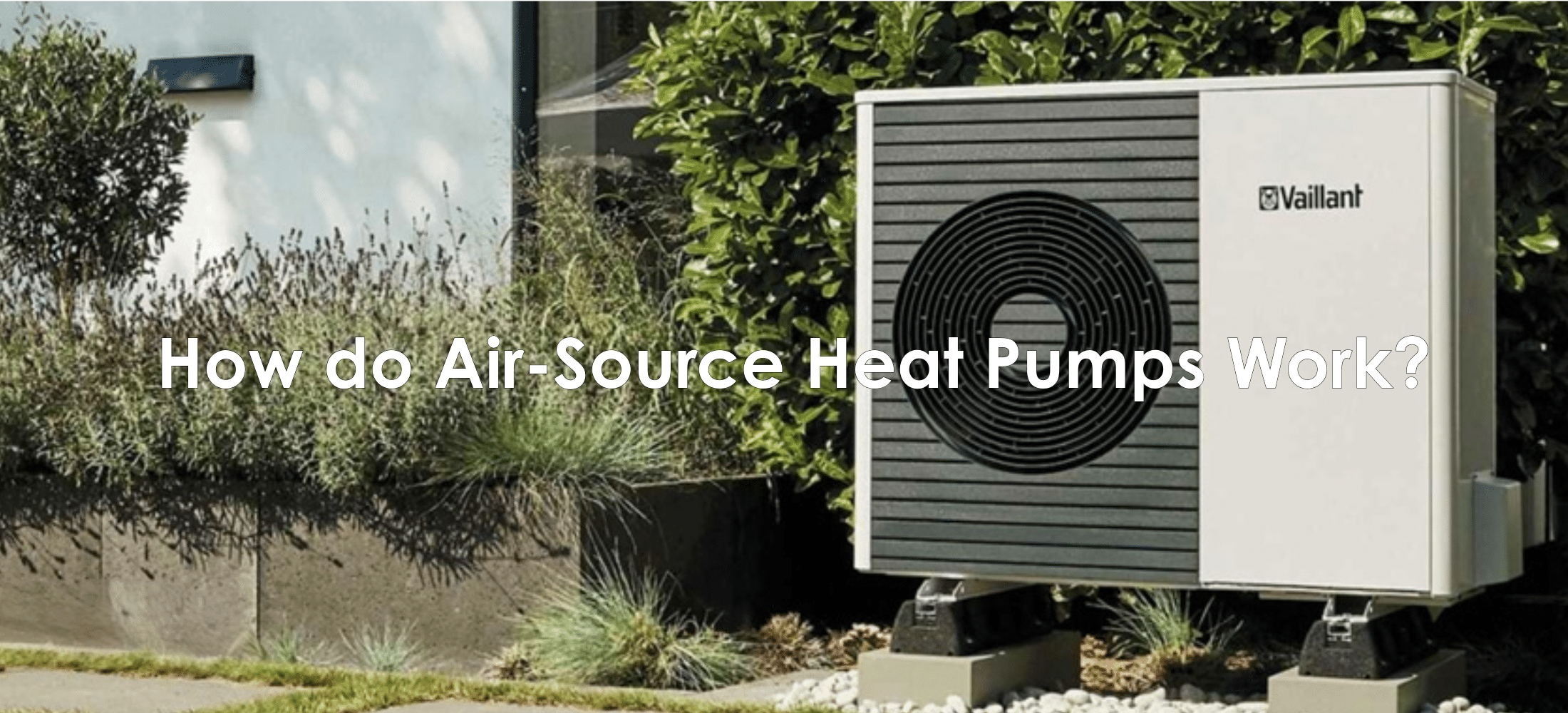Air source heat pumps are devices that use the outside air as a heat source to provide heating and, in some cases, cooling for buildings. Here’s a basic explanation of how air source heat pumps work:
Absorption of Heat from the Air:
Air source heat pumps begin by drawing in air from the surrounding environment, regardless of its temperature. The key component is a refrigerant, a special fluid with the ability to absorb heat from the air.
Turning Heat into Gas:
The absorbed heat causes the refrigerant to vaporise, transforming it from a liquid to a gas. The gaseous refrigerant then undergoes compression using a compressor, intensifying its temperature and pressure.
Transfer of High-Temperature Heat:
The hot, pressurised refrigerant is directed to the indoor unit of the heat pump. Inside, a coil facilitates the release of the high-temperature heat carried by the refrigerant.
Distribution of Heat:
A fan propels air over the heated coil, facilitating the transfer of warmth to the indoor space. The heated air is then distributed throughout the building via a ventilation system.
Condensation and Return:
As the refrigerant releases its heat indoors, it returns to a liquid state through condensation. The now-liquid refrigerant is cycled back to the outdoor unit to restart the process.
Cycling for Consistent Comfort:
This cycle repeats continuously, adjusting the heat output to meet the heating requirements of the building. The heat pump continually monitors and responds to the indoor temperature, ensuring a consistent and comfortable environment.
Below is a diagram explaining the process:


